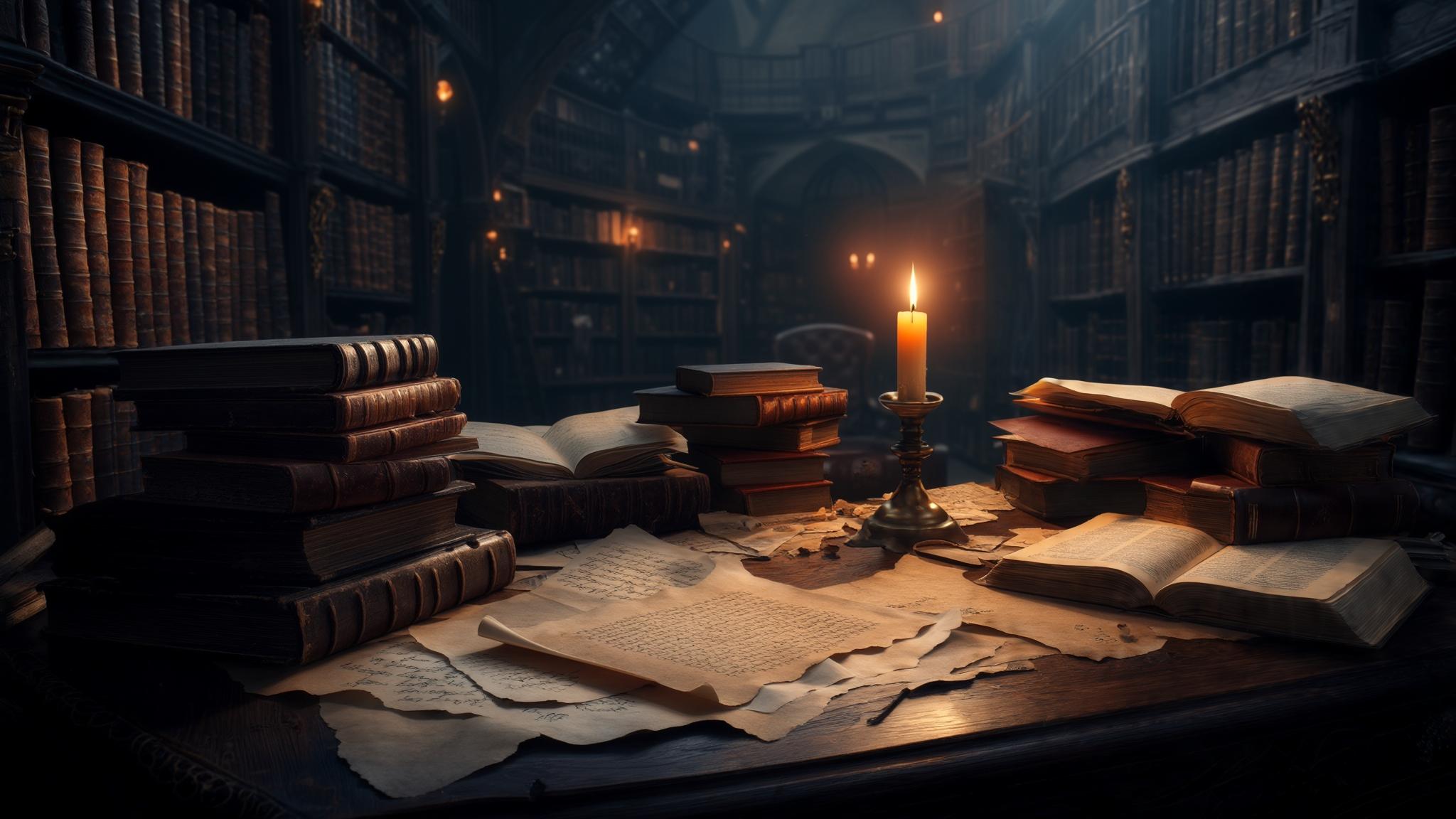Hi, Friend! Jen Glantz here. I’m a bestselling author, the first ever bridesmaid for hire and have been hired by hundreds of brides all over the world. Let’s talk about dramatic poem examples.
According to recent literary analysis, dramatic poetry employs dialogue and character development in over 78% of its most celebrated works, making it one of the most accessible yet powerful forms of verse for modern readers (Number Analytics). I discovered this firsthand during my college years when I stumbled upon Robert Browning’s “My Last Duchess” in a dusty anthology—the Duke’s chilling confession about his deceased wife hit me harder than any novel I’d read that semester.
Dramatic poetry creates an immediate connection between reader and speaker, transforming abstract emotions into vivid, lived experiences. These poems don’t just tell you about feelings; they make you feel them through carefully crafted voices, situations, and conflicts that mirror our own human struggles. Understanding dramatic poetry enhances our appreciation for how literary techniques can capture the complexity of human relationships and emotional experiences.
TL;DR
- Dramatic poetry combines narrative storytelling with poetic techniques, creating speakers who reveal themselves through monologue or dialogue
- The best dramatic poems balance literary merit, emotional authenticity, and accessibility while maintaining strong character development
- Classical examples established the foundation, while contemporary poets continue pushing boundaries
- These poems excel in performance settings due to their inherent theatrical qualities and emotional range
- Understanding dramatic poetry enhances appreciation for how conflict and tension drive both literature and real-life situations
Quick Resources
-
AI Wedding Speech Generator – Channel dramatic flair into your wedding speeches
-
Wedding Vow Generator – Write deeply emotional vows inspired by poetic voices
-
AI Wedding Planner – Coordinate every emotional moment with precision
-
Free 24/7 Wedding Hotline – Get immediate help navigating wedding drama
-
All Wedding Tools – See all tools to personalize your big day
Essential Criteria for Evaluating Dramatic Poetry
When selecting dramatic poems for study or enjoyment, you need to consider multiple factors that determine their effectiveness and impact. The strongest dramatic poetry demonstrates sophisticated language use, authentic emotional content, and clear character development while remaining accessible to their intended audience. These works should contain genuine conflict that drives the narrative forward and offer educational value through their exploration of human nature and literary techniques.
When planning memorable celebrations that capture emotional authenticity, consider how professional wedding support can help orchestrate dramatic moments with the same skill that poets use to craft compelling verses.
Coordinate every emotional moment with our AI Wedding Planner
| Evaluation Criteria | Key Elements | Quality Indicators |
|---|---|---|
| Literary Merit | Figurative language mastery, structural integrity, emotional authenticity | Sophisticated metaphors, form supports content, genuine emotional resonance |
| Character Development | Clear voice, psychological complexity, authentic speech patterns | Distinct personality, believable motivations, consistent yet evolving voice |
| Dramatic Impact | Conflict presence, tension building, revelation moments | Internal/external conflict, escalating stakes, meaningful character insights |
| Accessibility | Language clarity, universal themes, performance potential | Engaging for target audience, relatable emotions, strong oral interpretation |
| Educational Value | Literary technique demonstration, human nature exploration, cultural significance | Teaching opportunities, psychological insights, historical/social relevance |
Literary merit encompasses figurative language mastery, structural integrity that supports dramatic content, and emotional authenticity that feels genuine rather than forced. The most compelling dramatic poetry achieves this through careful attention to how metaphors illuminate character psychology rather than existing for decorative purposes.
Performance potential evaluates how well poems translate to oral interpretation, their emotional range and variety, and their ability to engage audiences through voice and embodiment. Great dramatic poetry maintains its power whether read silently or performed aloud, with rhythmic patterns and word choices that enhance spoken delivery.
Language Mastery and Structural Elements
Effective dramatic poetry requires sophisticated use of figurative language, imagery, and sound devices that enhance rather than overshadow the dramatic content. The poem’s form must support its emotional and narrative elements, creating a seamless integration between structure and meaning. Writers achieve this through careful attention to rhythm, rhyme schemes, and line breaks that emphasize key dramatic moments.
Each dramatic poem demonstrates how technical mastery serves the emotional and psychological revelation that defines the genre. Figurative language should illuminate character psychology and advance the dramatic situation rather than existing for decorative purposes. Structural choices create tension, reveal character traits, or emphasize emotional turning points.
Character Development and Voice Authenticity
Strong dramatic poems create vivid personas or speakers whose voices feel distinct and psychologically complex. These characters must possess clear motivations, recognizable human flaws, and authentic speech patterns that reveal their backgrounds, education levels, and emotional states. The most memorable dramatic poetry features speakers who inadvertently reveal more about themselves than they intend.
Write vows with authentic voice using our Wedding Vow Generator
Consider how a dramatic poem might reveal character through word choice alone. A wealthy, educated speaker might use formal language and classical references, while unconsciously revealing their arrogance through dismissive comments about “common people.” Meanwhile, a working-class speaker might use colloquial expressions and regional dialect, but demonstrate deep wisdom about human nature that contradicts stereotypes about education and intelligence. These subtle linguistic choices create authentic voices that feel genuine rather than constructed.
Character consistency requires maintaining voice throughout the poem while allowing for emotional evolution or revelation. Authentic dialogue incorporates natural speech rhythms, regional dialects when appropriate, and subtext that reveals unspoken tensions between what characters say and what they actually mean.
Classical Monologues That Defined the Genre
The foundation of dramatic poetry rests on masterful monologues from Victorian and early modern poets who perfected the art of psychological revelation through verse. These works established the conventions of unreliable narrators, dramatic irony, and character studies that continue influencing contemporary poets. Each poem creates a complete dramatic situation through a single speaker’s voice, revealing complex human psychology through carefully chosen details and unconscious self-revelation.
The mastery of dramatic poetry in this era set the standard for how a single dramatic poem can contain entire worlds of meaning. Victorian dramatic monologues pioneered the technique of psychological realism in poetry, allowing readers to understand characters through their own words rather than external description. These classical works demonstrate how formal constraints enhance rather than limit dramatic expression.
1. “My Last Duchess” by Robert Browning
This masterpiece presents the Duke of Ferrara speaking to an envoy about his deceased wife’s portrait, gradually revealing his controlling nature and implied murder of his previous duchess. Browning uses rhyming couplets in iambic pentameter to create a sense of the Duke’s controlled civility while the content reveals his monstrous character. The poem’s power lies in its dramatic irony—the Duke believes he’s presenting himself favorably while actually exposing his murderous jealousy.
Channel dramatic flair into your wedding speech with our AI Wedding Speech Generator
This dramatic poem exemplifies how character revelation can occur through what speakers choose to emphasize or dismiss. The Duke’s casual revelation of having his wife killed demonstrates how dramatic monologue can reveal character through unconscious self-exposure. Art serves as a central metaphor for the Duke’s desire to control and possess, with the portrait representing his ultimate victory over his wife’s independence.
2. “The Love Song of J. Alfred Prufrock” by T.S. Eliot
Prufrock’s internal monologue captures modern anxiety and social paralysis through stream-of-consciousness technique and fragmented urban imagery. The speaker contemplates attending a social gathering but becomes overwhelmed by self-doubt and fear of judgment, ultimately remaining isolated. Eliot’s innovative structure mirrors the speaker’s fractured mental state, jumping between observations, memories, and anxieties without linear progression.
Stream-of-consciousness technique allows readers to experience Prufrock’s anxiety directly rather than having it described from outside. Modern urban imagery reflects the alienation and disconnection characteristic of early 20th-century city life, creating a speaker who embodies the psychological costs of modern existence.
3. “Porphyria’s Lover” by Robert Browning
This chilling monologue features a speaker who describes strangling his lover with her own hair to preserve a moment of perfect love. The poem explores obsession and the desire to control romantic relationships through the lens of a psychologically disturbed narrator. Browning’s psychological realism creates a disturbing portrait of possessive love taken to its logical extreme.
Dramatic irony emerges from the speaker’s calm, rational tone while describing an irrational, violent act. The poem’s exploration of romantic idealization reveals how love can become destructive when it prioritizes possession over partnership, making readers question the nature of romantic devotion itself.
4. “Ulysses” by Alfred Lord Tennyson
The aging hero Ulysses speaks of his restless desire for adventure despite his advanced age, rejecting quiet retirement in favor of one final voyage. Written in blank verse, the poem embodies Victorian ideals of exploration and self-improvement while exploring themes of aging, purpose, and the tension between duty and personal fulfillment.
Ulysses represents the eternal human struggle between security and adventure. Heroic determination conflicts with physical limitations, creating internal tension that drives the dramatic monologue. Blank verse structure provides flexibility for natural speech rhythms while maintaining poetic dignity appropriate to the heroic speaker.
5. “The Soliloquy of the Spanish Cloister” by Robert Browning
A monk’s bitter internal rant against a fellow brother reveals his own hypocrisy and petty hatreds, creating a satirical portrait of religious pretension. The poem uses colloquial language and comic dramatic irony to expose how spiritual environments can harbor the same human failings found elsewhere. Browning’s humor doesn’t diminish the serious critique of religious hypocrisy and human nature’s darker impulses.
Comic dramatic irony allows readers to see the speaker’s flaws while he remains oblivious to his own hypocrisy. Religious satire exposes the gap between spiritual ideals and human behavior without dismissing the value of genuine faith, creating a complex portrait of institutional religion’s human limitations.
Contemporary Voices Breaking New Ground
Modern dramatic poetry has expanded beyond traditional monologue forms to include diverse voices, experimental structures, and contemporary social issues. These poets maintain the psychological depth of classical dramatic poetry while addressing current concerns about identity, social justice, and cultural change. Contemporary dramatic poems often blur the lines between personal confession and universal experience, creating speakers who represent broader social groups or movements.
Just as contemporary poets break traditional boundaries while maintaining emotional authenticity, modern wedding celebrations benefit from professional bridesmaid services that blend innovation with timeless support.
Get real-time help handling wedding drama with our Free 24/7 Wedding Hotline
| Classical vs. Contemporary Dramatic Poetry | Classical Approach | Contemporary Approach |
|---|---|---|
| Form Structure | Traditional meters, rhyme schemes | Free verse, experimental forms |
| Voice Perspective | Individual psychological studies | Collective voices, marginalized perspectives |
| Subject Matter | Universal human themes, historical figures | Social justice, identity politics, cultural diversity |
| Language Style | Formal literary language | Colloquial, diverse dialects, multimedia elements |
| Performance Context | Private reading, academic study | Spoken word venues, digital platforms, community events |
Contemporary dramatic poetry incorporates diverse cultural perspectives and voices previously marginalized in literary tradition. Modern poets experiment with form and structure while maintaining the essential dramatic elements of character, conflict, and revelation. The shift toward performance-based poetry has created new opportunities for dramatic expression through spoken word and digital platforms.
6. “We Real Cool” by Gwendolyn Brooks
This poem presents the collective voice of young pool players who have dropped out of school, capturing their bravado while hinting at their tragic fate. Brooks uses innovative line breaks and rhythm to mirror jazz music and street speech patterns. The poem’s power comes from its economy—in just eight short lines, it creates a complete dramatic situation and implies an entire social commentary about youth, education, and urban life.
Collective voice technique allows the poem to speak for an entire group while maintaining individual personality. Jazz-influenced rhythm and structure reflect the cultural context of the speakers and their community, creating authentic representation of African American urban experience.
7. “Lady Lazarus” by Sylvia Plath
The speaker compares her suicide attempts to Lazarus’s resurrection, creating a powerful dramatic monologue about survival, performance, and female rage. Plath transforms personal trauma into theatrical spectacle, using Holocaust imagery and performance metaphors to explore themes of death, rebirth, and artistic creation. The poem’s confessional intensity creates both intimacy and distance through its dramatic presentation.
Write bold and memorable vows using our Wedding Vow Generator
Holocaust imagery creates controversial but powerful metaphors for personal suffering and survival. Performance metaphors transform private pain into public spectacle, questioning the relationship between art and personal experience while examining how trauma becomes commodified through artistic expression.
8. “The Mother” by Gwendolyn Brooks
This haunting dramatic monologue addresses the complex emotions surrounding abortion, giving voice to an often-silenced experience. Brooks creates a speaker who directly confronts the reader with difficult truths about reproductive choices and maternal feelings. The poem’s strength lies in its refusal to simplify complex emotional and moral territory.
Direct address to the reader creates intimacy and forces engagement with difficult subject matter. Complex maternal emotions receive honest exploration without judgment or easy resolution, allowing readers to grapple with the psychological complexity of reproductive decisions.
9. “Diving into the Wreck” by Adrienne Rich
The speaker describes diving to explore a shipwreck, which becomes an extended metaphor for examining the wreckage of patriarchal society and reclaiming women’s stories. Rich uses the journey narrative structure to create a quest for truth and self-discovery. The poem combines personal exploration with broader feminist themes about recovering lost or suppressed histories.
Extended metaphor of underwater exploration provides concrete imagery for abstract concepts of social and personal discovery. Feminist themes emerge through the speaker’s quest to understand and document previously ignored or misrepresented experiences, creating both personal and political significance.
10. “Howl” by Allen Ginsberg
This epic dramatic poem voices the Beat Generation’s frustration with conformist society and celebrates outcasts and rebels. Ginsberg creates a prophetic speaker who catalogs the destruction of creative spirits by social conformity and materialism. The poem’s revolutionary form and passionate delivery made it a landmark of American counterculture literature.
Cataloguing technique creates rhythmic intensity while building a comprehensive indictment of social conformity. Prophetic voice combines personal observation with social criticism, positioning the speaker as both witness and judge of American society’s treatment of nonconformists and artists.
Historical and Political Drama in Verse
Poetry has long served as a vehicle for political commentary and historical documentation, with dramatic poems offering particularly powerful ways to humanize large-scale events and social movements. These works transform abstract political concepts into personal experiences through individual speakers who witness, participate in, or reflect on significant historical moments. The most effective political dramatic poetry avoids heavy-handed propaganda by focusing on human stories within larger historical contexts.
A dramatic poem about war might focus on a single soldier’s letter home, revealing through his word choices and omissions both his fear and his attempt to protect his family from that fear. The poem’s power comes from what the soldier doesn’t say—the gaps between his reassuring words and the reality of his situation—creating dramatic tension that makes the broader tragedy of war personally immediate for readers.
Historical dramatic poems provide personal perspectives on public events, making abstract political concepts accessible through individual experience. Political poetry achieves lasting impact when it balances social commentary with universal human emotions and experiences, creating works that transcend their immediate historical context.
11. “The Charge of the Light Brigade” by Alfred Lord Tennyson
This poem dramatizes a disastrous cavalry charge during the Crimean War, honoring soldiers’ bravery while questioning military leadership decisions. Tennyson uses rhythmic innovation that mimics horse hooves and battle sounds, creating an auditory experience that places readers in the midst of the charge. The poem manages to celebrate heroism while critiquing the incompetence that led to unnecessary deaths.
Rhythmic patterns mirror the physical action of the cavalry charge, creating immersive sound effects through poetic technique. The poem balances patriotic honor for soldiers with implicit criticism of military leadership failures, demonstrating how poetry can simultaneously support troops while questioning war itself.
12. “Strange Fruit” by Abel Meeropol
Originally written as a poem before becoming Billie Holiday’s famous song, this work uses the metaphor of fruit hanging from trees to describe lynching in the American South. Meeropol creates a powerful indictment of racial violence through stark imagery that forces readers to confront brutal realities. The poem’s restraint makes its impact more devastating than graphic description would achieve.
Metaphorical language transforms horrific violence into poetic imagery without diminishing its emotional impact. Social protest poetry demonstrates how artistic restraint can amplify rather than diminish political messages, creating lasting cultural impact through memorable imagery.
13. “The Second Coming” by W.B. Yeats
Written after World War I, this apocalyptic vision captures the sense that civilization is falling apart and something terrible is about to emerge. Yeats creates a prophetic speaker who observes cosmic disorder and predicts catastrophic change. The poem’s imagery of gyres and rough beasts has become iconic for describing historical moments when old orders collapse.
Apocalyptic imagery provides a framework for understanding historical upheaval and social transformation. Prophetic tone positions the speaker as both observer and interpreter of historical forces beyond individual control, creating a sense of inevitable change and cultural crisis.
14. “Dulce et Decorum Est” by Wilfred Owen
Owen’s World War I poem dramatically describes a gas attack, concluding that dying for one’s country is neither sweet nor proper. The poem serves as a powerful anti-war statement through graphic imagery and personal testimony from someone who experienced combat firsthand. Owen’s Latin conclusion ironically references classical poetry that glorified warfare.
Graphic war imagery creates visceral impact that challenges romanticized notions of military glory. Personal testimony from combat experience provides authenticity that strengthens the poem’s anti-war message, creating credible opposition to propaganda and patriotic rhetoric.
15. “Birmingham Sunday” by Langston Hughes
This poem memorializes the four girls killed in the 1963 Birmingham church bombing, giving voice to collective grief and outrage over racial violence. Hughes creates a speaker who bears witness to tragedy while maintaining dignity and restraint. The poem transforms a specific historical event into a universal statement about innocence destroyed by hatred.
Memorial poetry requires balancing grief with dignity, honoring victims without exploiting their suffering. Collective voice speaks for an entire community’s response to tragedy and injustice, creating shared mourning that transcends individual experience while maintaining personal emotional connection.
Relationship and Identity Explorations
Dramatic poetry excels at exploring complex relationships and identity formation through speakers who grapple with family dynamics, romantic connections, and self-understanding. These poems often feature moments of recognition or revelation where speakers gain new insight into themselves or their relationships with others. The dramatic format allows poets to explore psychological complexity through character development and internal conflict.
Understanding relationship dynamics through dramatic poetry can provide insights for navigating complex family situations, much the way professional wedding coordinators help manage interpersonal tensions during major celebrations.
Craft emotionally resonant wedding speeches with our AI Wedding Speech Generator
Relationship dynamics in dramatic poetry reveal character through interaction and conflict rather than direct description. Identity exploration benefits from the dramatic format’s ability to show psychological development through voice and perspective changes, creating authentic portraits of human growth and self-discovery.
16. “Daddy” by Sylvia Plath
A daughter’s dramatic confrontation with her deceased father’s memory mixes personal trauma with Holocaust imagery to explore complex family dynamics. Plath creates a speaker who works through feelings of love, hate, and liberation in relation to a dominating father figure. The poem’s controversial imagery has sparked ongoing debates about the ethics of using historical tragedy for personal expression.
Confessional poetry blurs the line between personal experience and artistic creation, raising questions about privacy and authenticity. Controversial imagery demonstrates how dramatic poetry can push boundaries while exploring difficult psychological territory, creating works that challenge readers’ comfort zones.
17. “Those Winter Sundays” by Robert Hayden
This quiet but powerful dramatic reflection focuses on a father’s unrecognized sacrifices and the speaker’s regret for not appreciating them at the time. Hayden creates a speaker who looks back on childhood with adult understanding, recognizing love expressed through actions rather than words. The poem’s understated language enhances its emotional impact.
Retrospective perspective allows speakers to reinterpret childhood experiences with adult wisdom and understanding. Understated language can create more powerful emotional effects than dramatic declarations or elaborate imagery, demonstrating how restraint serves emotional authenticity.
18. “What’s That Smell in the Kitchen?” by Marge Piercy
This dramatic monologue uses burning dinner as a metaphor for women’s anger about traditional gender roles and domestic expectations. Piercy creates a speaker who transforms everyday domestic rebellion into a statement about women’s frustration with limited opportunities. The poem finds political significance in mundane household activities.
Domestic imagery provides accessible metaphors for broader social and political issues affecting women’s lives. Contemporary language and situations make feminist themes relevant to modern readers’ daily experiences, creating political poetry that connects abstract issues with concrete realities.
19. “Mirror” by Sylvia Plath
The mirror speaks as a character, observing a woman’s aging process and becoming a witness to time’s passage and changing self-perception. Plath creates an unusual speaker that claims objectivity while revealing the subjective nature of self-image and aging. The poem explores how external reflection shapes internal identity.
Personification creates an objective observer who paradoxically reveals subjective truths about human self-perception. The mirror’s perspective provides distance that allows for honest examination of aging and self-image concerns, creating psychological insight through unusual narrative perspective.
Mythological and Archetypal Narratives
Dramatic poems that draw on mythological and archetypal material connect contemporary experiences with timeless human patterns and stories. These works often reinterpret classical myths from modern perspectives, giving voice to previously silent characters or exploring familiar stories through contemporary psychological understanding. The mythological framework provides universal resonance while allowing for personal and cultural reinterpretation.
| Mythological Dramatic Poetry Elements | Traditional Myth | Dramatic Poetry Adaptation | Modern Relevance |
|---|---|---|---|
| Character Voice | Silent or externally described | First-person speaker with psychological depth | Contemporary psychological understanding |
| Narrative Focus | Action and plot events | Internal experience and motivation | Personal identity and choice |
| Moral Framework | Clear good vs. evil | Moral ambiguity and complexity | Modern ethical considerations |
| Cultural Context | Ancient religious/cultural values | Reinterpreted through modern lens | Current social and political issues |
| Universal Themes | Fate, honor, divine will | Free will, personal agency, self-determination | Individual empowerment and responsibility |
Mythological frameworks provide universal patterns that readers can recognize while allowing for contemporary reinterpretation and personal application. Archetypal narratives connect individual experiences with broader human patterns, creating both personal and universal significance through familiar story structures.
Plan with mythic precision using our AI Wedding Planner
20. “Ithaka” by Constantine Cavafy
Using Odysseus’s journey home as a framework, this poem suggests that the journey itself holds more importance than reaching the destination. Cavafy creates a speaker who offers wisdom about life’s purpose and meaning through the metaphor of travel and exploration. The poem transforms the classical epic into philosophical meditation on how we should approach life’s challenges.
Classical allusion provides familiar narrative structure while allowing for philosophical exploration of life’s meaning and purpose. Journey metaphor offers concrete imagery for abstract concepts about personal growth and life satisfaction, creating accessible wisdom through mythological reference.
21. “Leda and the Swan” by W.B. Yeats
This sonnet dramatically retells the Greek myth of Zeus’s rape of Leda, exploring themes of power, violence, and historical consequence through vivid imagery and compressed narrative. Yeats creates a speaker who observes the mythological event while considering its implications for human history and civilization. The poem examines how violence shapes historical development.
Mythological violence provides a framework for examining power dynamics and their historical consequences. Sonnet form creates compression that intensifies the dramatic impact of the mythological narrative, demonstrating how formal constraints can enhance rather than limit dramatic expression.
22. “Persephone” by Louise Glück
This modern retelling of the Persephone myth gives the goddess her own voice to explore themes of marriage, autonomy, and seasonal change with contemporary psychological insight. Glück creates a speaker who reinterprets her mythological story from a feminist perspective, claiming agency in what was traditionally portrayed as victimization. The poem transforms classical myth into modern psychological drama.
Feminist reinterpretation gives voice and agency to traditionally passive mythological figures. Psychological realism applies modern understanding of human behavior to ancient mythological narratives, creating contemporary relevance through classical material.
23. “Musée des Beaux Arts” by W.H. Auden
Inspired by Breughel’s painting of Icarus falling, this poem reflects on how human suffering often occurs while ordinary life continues unnoticed around it. Auden creates a speaker who observes art and life with philosophical detachment, noting the contrast between individual tragedy and collective indifference. The poem explores how we respond to others’ suffering.
Ekphrastic poetry demonstrates how visual art can inspire literary reflection and philosophical observation. Philosophical observation provides distance that allows for honest examination of human responses to suffering, creating insight through artistic contemplation.
24. “The Song of Wandering Aengus” by W.B. Yeats
Based on Irish mythology, this poem tells of Aengus’s eternal quest for a beautiful woman who appeared to him as a fish, then transformed into a girl before disappearing. Yeats creates a speaker whose mythological quest represents universal longing and the pursuit of ideal beauty. The poem’s lyrical language enhances its mythological and romantic themes.
Irish mythology provides cultural specificity while exploring universal themes of longing and romantic pursuit. Lyrical beauty enhances the mythological content, creating musical language appropriate to the romantic quest narrative while maintaining dramatic tension.
25. “Diving into the Wreck” by Adrienne Rich
Rich uses underwater exploration as an extended metaphor for examining damaged relationships and recovering suppressed histories. The speaker embarks on a literal and figurative journey to understand what has been lost or destroyed, particularly in terms of women’s experiences and stories. The poem combines personal exploration with broader social and historical investigation.
Extended metaphor provides concrete imagery for abstract processes of historical and personal recovery. Archaeological imagery suggests the careful work required to uncover and understand suppressed or forgotten experiences, creating both personal and political significance through exploration narrative.
How Professional Support Enhances Life’s Dramatic Moments
Just as dramatic poetry requires skilled interpretation to reach its full emotional impact, life’s most significant moments benefit from professional guidance and support. Wedding planning, in particular, involves navigating complex family dynamics, managing multiple personalities, and ensuring that important celebrations unfold smoothly despite potential conflicts. Professional services can provide the expertise needed to handle these dramatic situations with grace and skill.
When dealing with complex family dynamics and emotional tensions, professional bridesmaid support can provide the same kind of skilled interpretation and conflict resolution that makes dramatic poetry so effective at revealing human nature.
Get instant guidance with our Free 24/7 Wedding Hotline
Consider a wedding where the bride’s divorced parents refuse to speak to each other, the groom’s mother disapproves of the venue choice, and three different family members have conflicting ideas about the ceremony order. A professional wedding coordinator can read the emotional subtext, anticipate potential conflicts, and orchestrate solutions that honor everyone’s feelings while keeping the focus on the couple’s joy. This expertise in managing human drama translates directly from literary analysis to real-world event coordination.
Professional wedding support helps couples manage the emotional intensity and logistical complexity that characterizes major life celebrations. Experienced professionals can anticipate and address potential conflicts before they disrupt important events, ensuring that celebrations remain focused on joy rather than drama.
Final Thoughts
Dramatic poetry offers readers a unique window into human psychology and experience through carefully crafted voices that reveal themselves through conflict, revelation, and emotional intensity. These 25 dramatic poem examples demonstrate the genre’s versatility, from classical monologues that established foundational techniques to contemporary works that push boundaries and explore new territories of human experience.
The enduring appeal of dramatic poetry lies in its ability to make abstract emotions concrete through specific characters and situations. Whether exploring historical events, personal relationships, or mythological narratives, these poems create speakers who feel authentic and psychologically complex, allowing readers to experience different perspectives and emotional states.
Just as dramatic poetry reveals character through carefully observed details and emotional authenticity, professional wedding speech coaching can help you craft memorable toasts that capture the same psychological depth and genuine feeling.
Understanding dramatic poetry enhances our appreciation for how conflict and tension drive both literature and real life. The skills required to interpret these poems—recognizing subtext, understanding character motivation, and appreciating the relationship between form and content—translate directly to navigating complex human situations in our own lives.
Dramatic poetry’s emphasis on character development and psychological realism provides valuable insights into human behavior and motivation. The genre’s combination of literary artistry with accessible storytelling makes it an ideal bridge between popular and academic approaches to literature, creating works that reward both casual reading and scholarly analysis.
1-800-BRIDESMAID
The Newlywed
Card Game
something extra to love
Read the weekly newsletter from Bridesmaid for Hire, 1-800-Bridesmaid, to hear about real stories, from strangers, who need advice on love, life, friendship, and so much more.
Looking for the perfect wedding gift for someone you adore? Grab The Newlywed Card Game. It's a fun and interactive game they can play on their honeymoon or future date nights.




